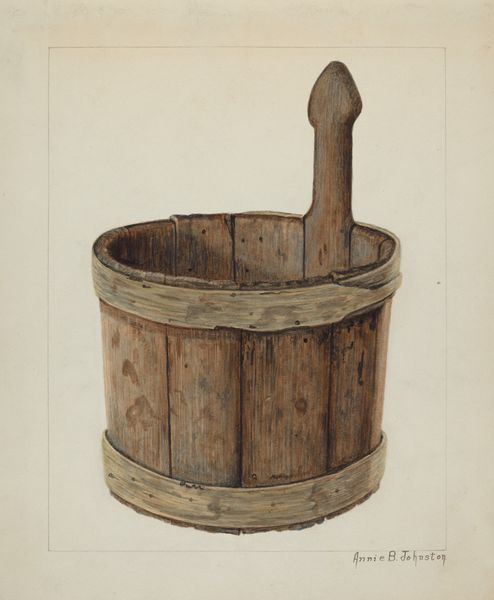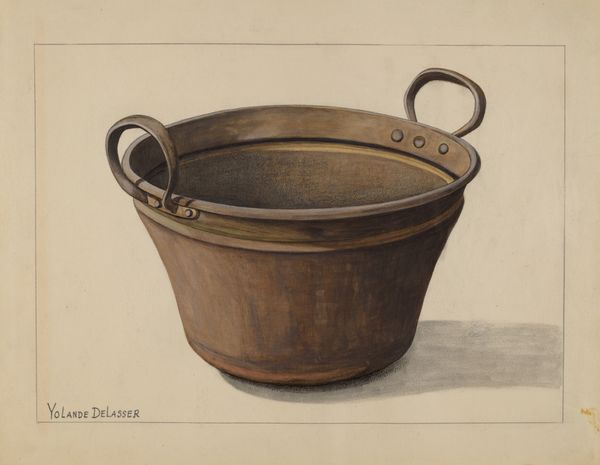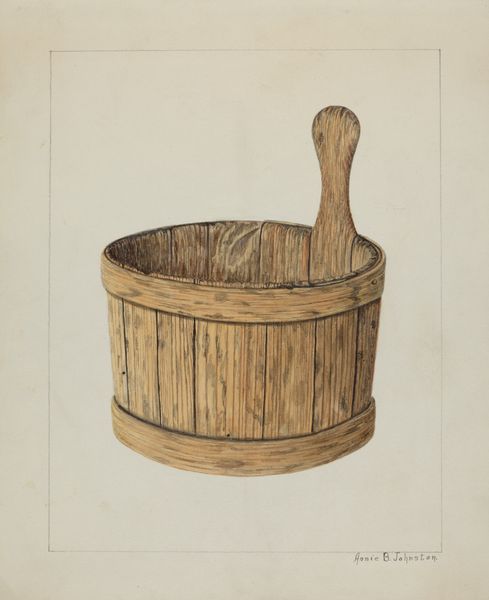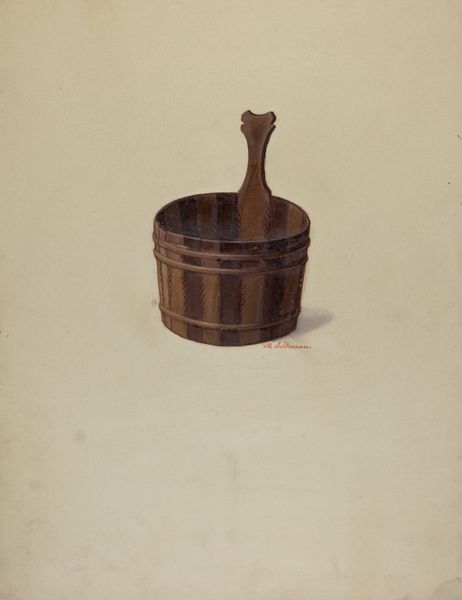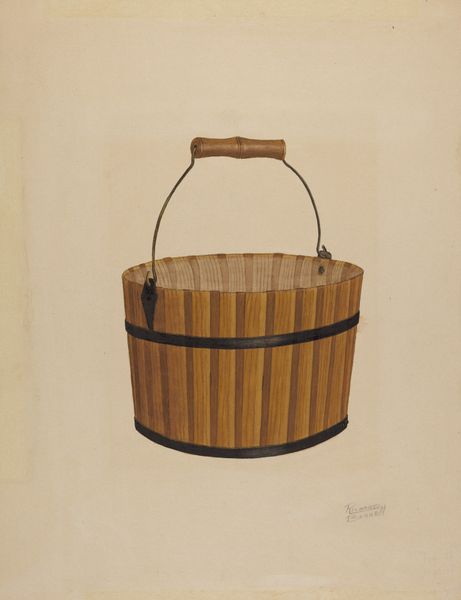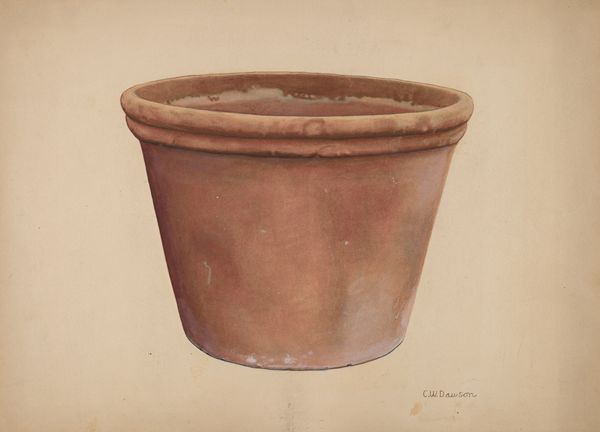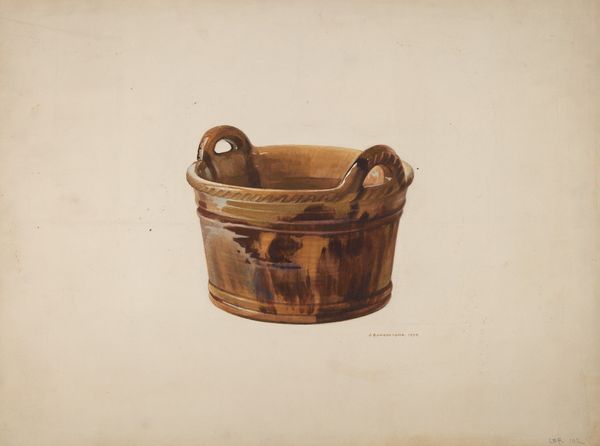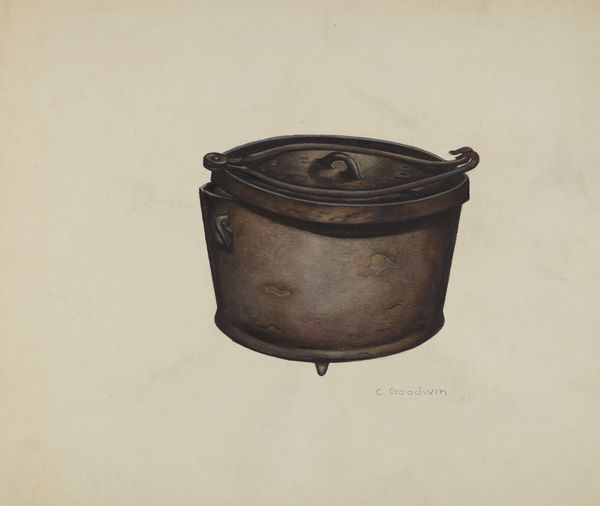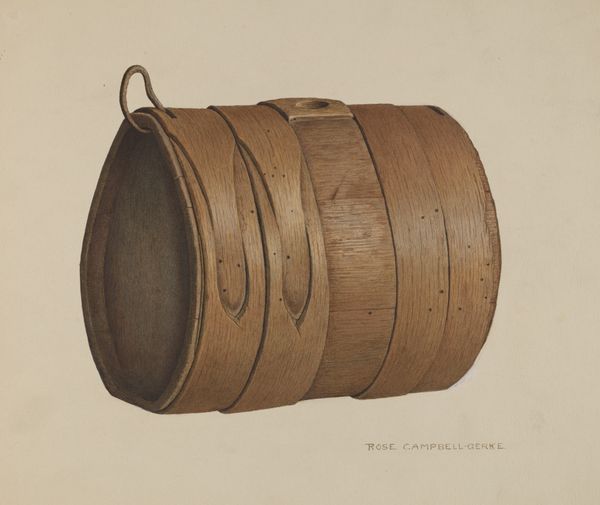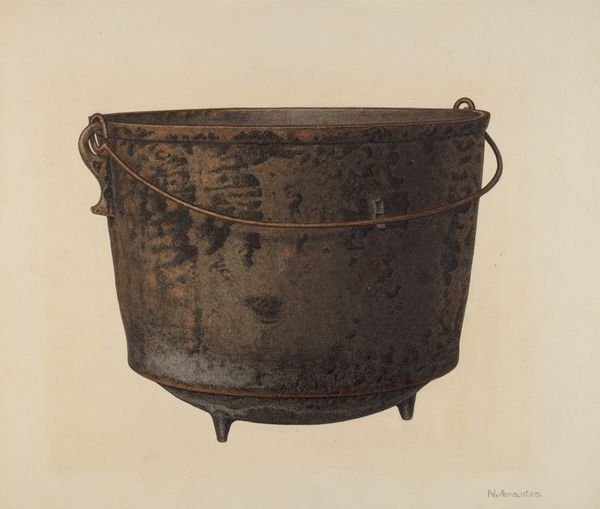
drawing
#
drawing
#
aged paper
#
toned paper
#
water colours
#
old engraving style
#
stoneware
#
coffee painting
#
watercolour bleed
#
watercolour illustration
#
golden font
#
watercolor
Dimensions: overall: 26.6 x 35.5 cm (10 1/2 x 14 in.) Original IAD Object: top: 6 1/8" in diameter, bottom: 4 1/2" in diameter; 3" high
Copyright: National Gallery of Art: CC0 1.0
Curator: Looking at Orison Daeda’s "Butter Firkin" from 1939, I'm struck by how ordinary it is, and yet… the artist clearly saw something captivating. Editor: Yes, the banality is almost jarring. A firkin? It's... functional. Utilitarian. My initial reaction is that the color palette evokes such nostalgia, like looking at an antique photograph bleached by the sun. Curator: I know what you mean. It’s rendered in watercolour on toned paper, which gives it this sepia-toned, antique feel even though it was made relatively recently. There’s also this strange intimacy in focusing so closely on a simple, everyday object. Editor: Precisely. A firkin speaks volumes about labour, about gendered work, about domestic economies rendered invisible by grand narratives of progress. Who made this firkin, who used it? Was butter-making a source of income, of sustenance? The object invites us to reflect on those questions. Curator: The artist clearly has an eye for detail, notice how delicately rendered each wooden plank is, how meticulously the artist recreated the decorative tacks, as if it wasn't enough to show that a wooden pail is just a wooden pail? Editor: Indeed, those details matter. They draw our gaze back to craft. Also, there is something about the precise, almost clinical rendering that separates it from lived experience. It becomes less about butter, perhaps, and more about seeing the essence of utility distilled through artistic interpretation. I find the overall mood is a melancholy celebration of overlooked labour. Curator: I agree. This image almost whispers to us across time, prompting us to reflect not just on butter but on what stories objects, even humble ones, carry. It feels as if the artist preserved a moment in time that he didn't want to see fade. Editor: Ultimately, Daeda invites us to consider not just what we consume, but also what—and whom—we often take for granted in the process of its production and consumption. That resonates deeply even today.
Comments
No comments
Be the first to comment and join the conversation on the ultimate creative platform.


